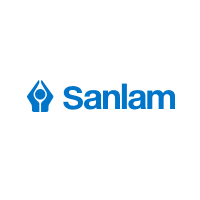Sanlam, one of South Africa’s largest financial services groups, has reduced project-related technology costs by 40 percent, by consolidating three different platforms for the management of its projects, enhancements, support, demand and supply management and timesheets portfolios, into one.
As one of the largest financial services groups in South Africa, Sanlam provides a number of diversified financial services, from insurance and investment, to financial planning and retirement advice to individuals. Headquartered in Cape Town, Sanlam is listed on both the Johannesburg Stock Exchange and the Namibian Stock Exchange, and was established in 1918 as a traditional life insurance company.
The organisation managed to combine three separate solutions with the implementation of Project Portfolio Office’s project portfolio management tool, PPO. PPO is a secure, cloud-based project portfolio management (PPM) application that is locally developed, extremely cost effective yet still includes extensive functionality which includes timesheet, resource capacity, demand and enhancement functionality.
According to Andre Hoffman, head of project management for the Sanlam Personal Finance Business Change project management office (PMO), the organisation required a cost effective project portfolio management solution with a solid track record and locally based support. “We needed to replace old technology, as the company was using three different platforms for managing the portfolios of projects, enhancements, support, demand and supply management, and timesheets. The decision was taken to use PPO to consolidate all of this onto a single project portfolio management platform, with the aim of establishing one source of information, therefore improving management and reporting through greater transparency, accuracy and consistency.”
As a cloud-based project portfolio management tool, PPO allowed Sanlam to get up-and-running quickly, without any upfront implementation or integration costs, as well as providing a flexible, scalable, more cost effective license model and lower integration complexity.
The organisation opted for a phased approach to the rollout of PPO, starting with project and portfolio management, then demand and supply management, then moving on to enhancement management, and finally time capturing.
“Sanlam chose to implement PPO in this manner, as it already had a mature process environment with regard to projects, enhancements and support in place prior to this rollout, and we needed to prove the value after each phase. Thus, each stage of the rollout was followed by a ‘sustainability’ phase to ensure the necessary user adoption, small refinements and any reporting or data field changes,” Hoffman explains. “In addition, we established a weekly change forum amongst all the Sanlam PMOs where changes were discussed, agreed upon and prioritised.”
Sanlam furthermore created structures within the organisation – including an EXCO representing the total user base, a steering committee, a core team comprised of influential and hands-on senior and line managers to agree on requirements and help with the communication to the users, and a project team – and provided for well-planned and concise communication to management and impacted users.
Since the rollout, Sanlam has enhanced accelerated timesheet capturing by 50 percent, as well as experiencing more non-tangible benefits including an improved cost versus benefit ratio, more consistent reporting, project compliance and governance tracking, and better traceability between demand, supply and finances.
In addition, PPO manages the organisation’s time capturing for projects, enhancements, support, leave, administration and training which feeds into the organisation’s ERP system.
Management buy-in was critical to the success of this project, Hoffman states, and from a ‘lessons learned’ perspective, it was important that management, up to C-level, was on board before engaging with users.
“Besides executive buy-in, Sanlam’s commitment to good project management practices upfront was another critical factor in this successful implementation,” explains Guy Jelley, founder and CEO of Project Portfolio Office “While we implement PPO for project offices every day, far too many forgo their own governance and methodologies during these implementations. Management’s commitment combined with formal monthly steering committees and weekly progress meetings allowed for a strong basis to build for a success. Moreover, having dedicated and focused project owners from each PMO within the group and access to key resources in the supporting departments, with IT, Security and Finance as examples, made for easy resolution of issues within a large and complex organisation.
“Sanlam committed key project office staff to both support, administer and train users from the start, which has allowed them to become self-sufficient very quickly, ensuring regular internal communications, ongoing training and awareness sessions and readily available support to their users – all done internally,” Jelley continues.
Adopting PPO’s standard of including a ‘sustainability’ phase worked well for Sanlam, as it allowed the company to refine outcomes during this post-implementation testing period, making production data more comprehensive and ensure user adoption. “In addition, we found that a solid relationship between Sanlam and Project Portfolio Office helped towards a mutual understanding,” adds Hoffman.
“PPO’s approach to implement the appropriate functionality as part of the core solution is commendable, as it assures clients of straightforward upgrades moving forward.”
Having implemented a complex project portfolio management tool previously, Sanlam embraced PPO’s standard implementation approach of making use of as much built-in functionality with the necessary configuration, but avoided any customisation. Furthermore, the company allowed for strong change management and stabilisation to drive user adoption.
“This was a huge success for a very large and complex organisation and critical success criteria for adoption for each phase were achieved normally within weeks,” says Jelley. “It is a credit to all involved that three very complex and long standing applications could be replaced, including the transfer of historical and active data within such a short period, with such high user adoption, thus achieving its 40 percent cost savings.”


